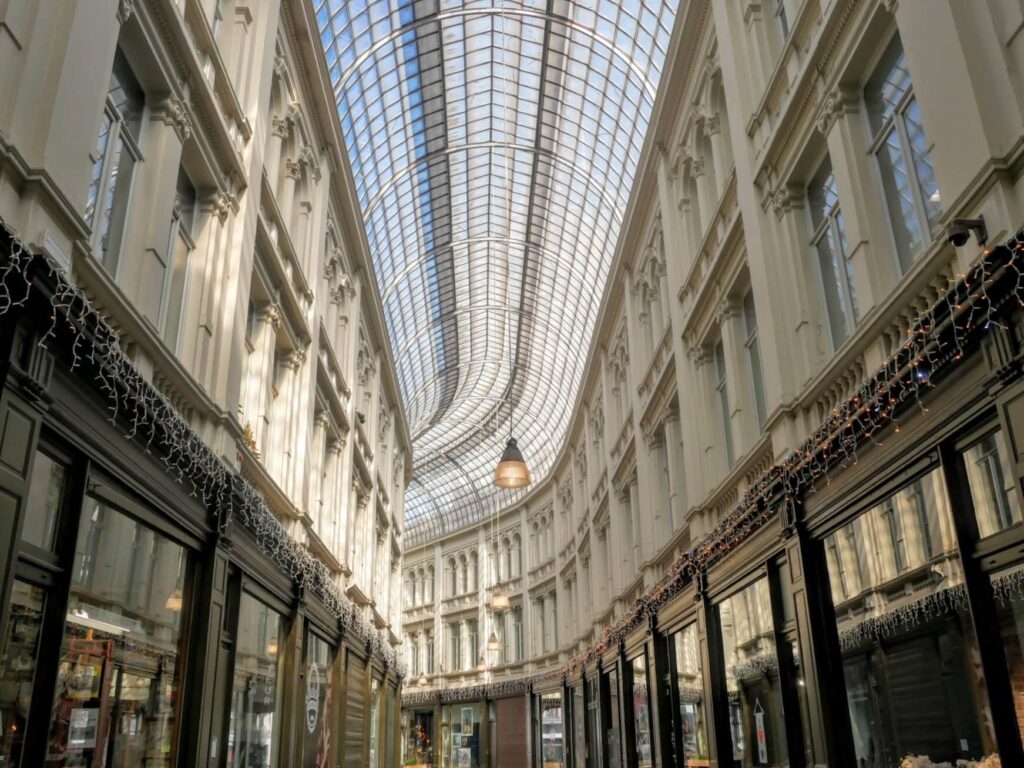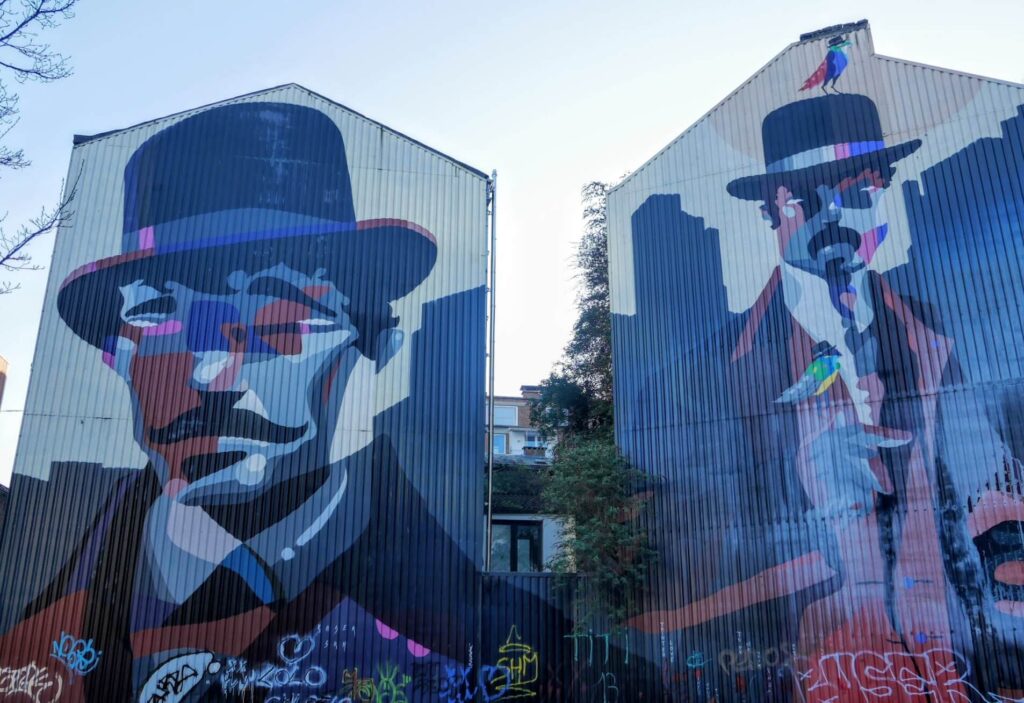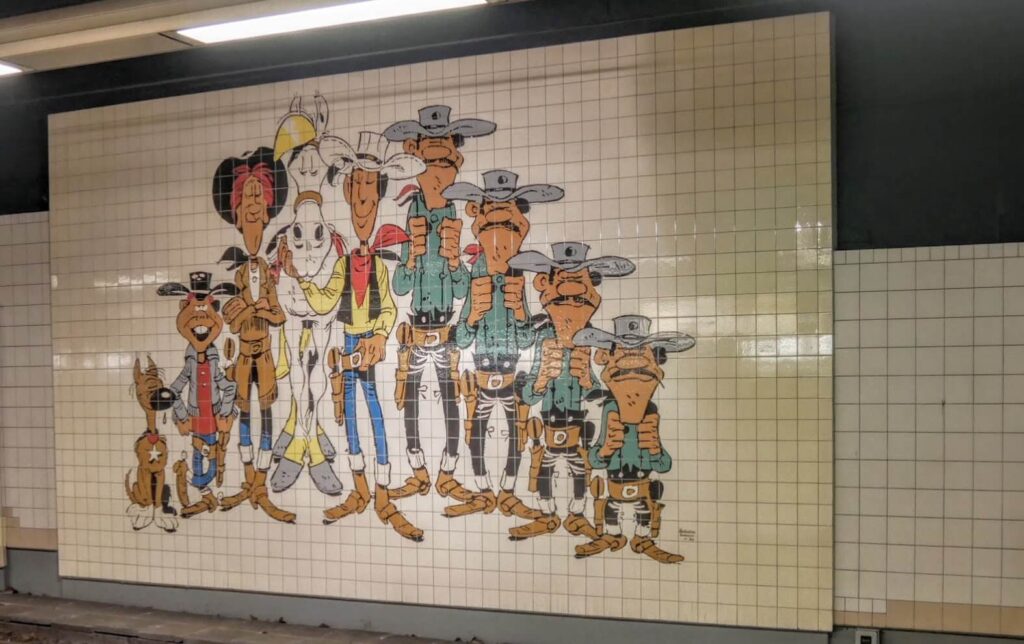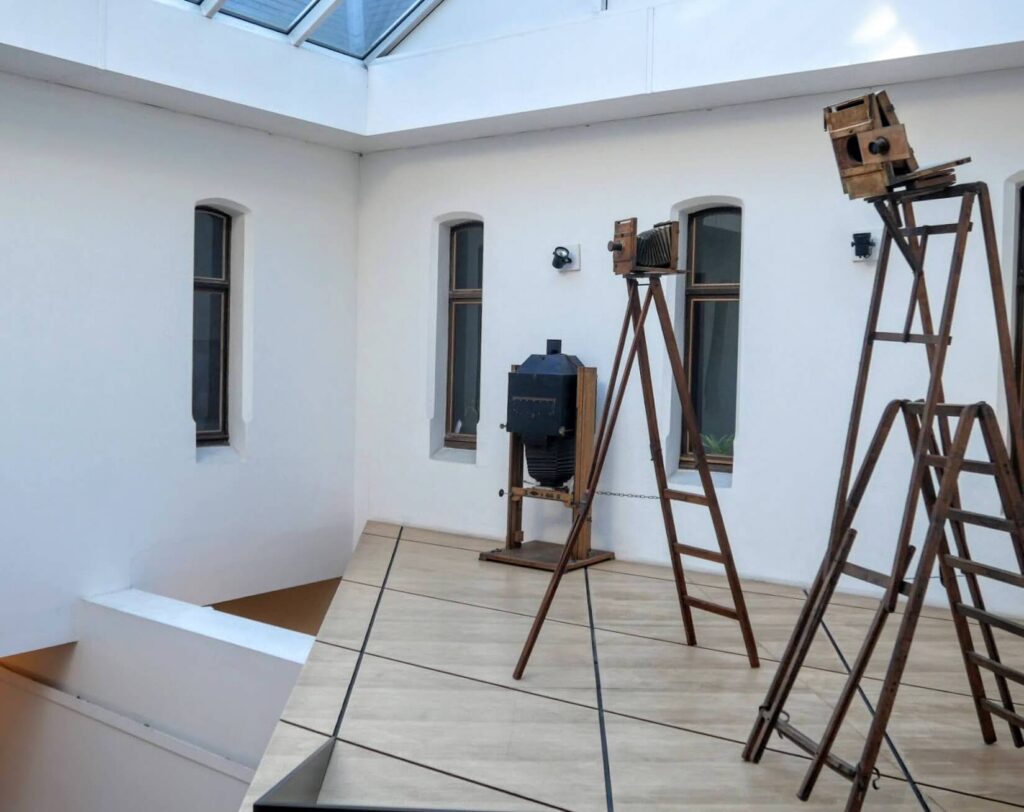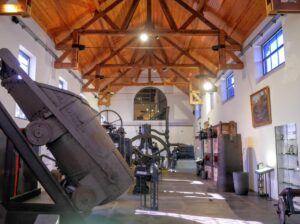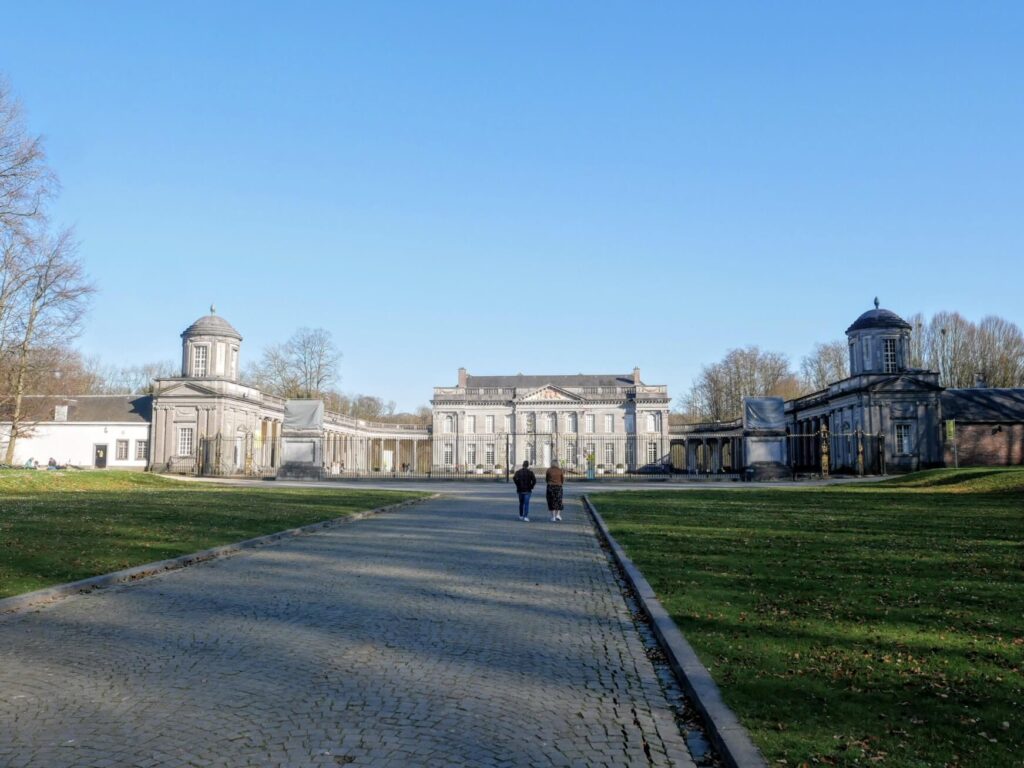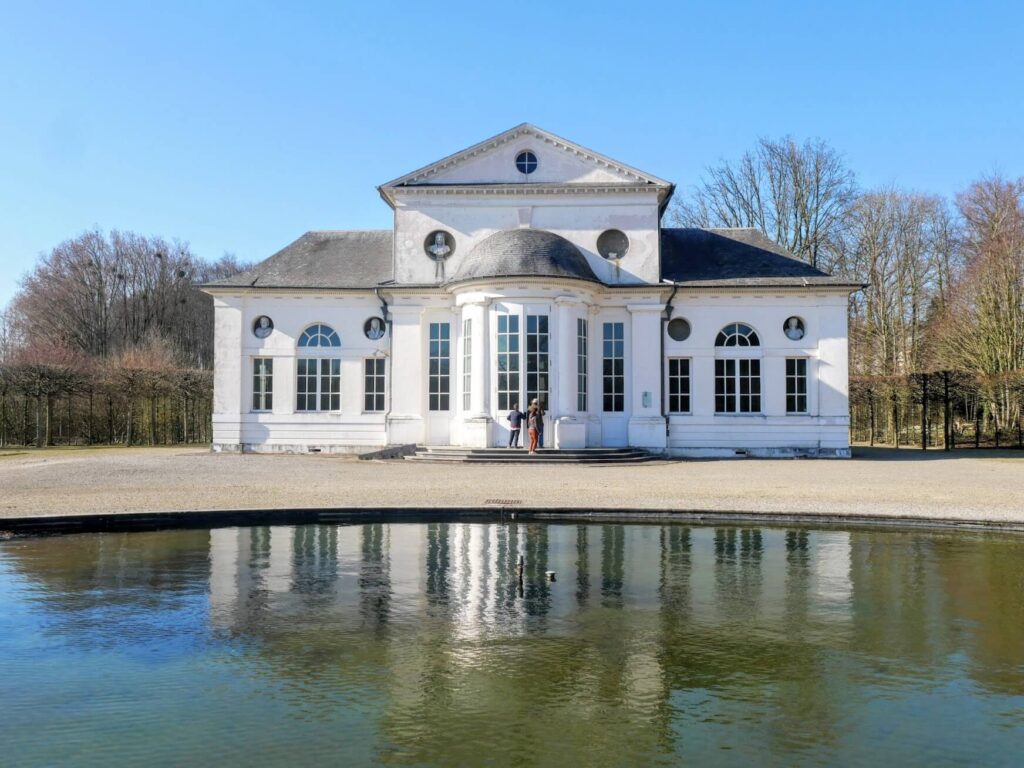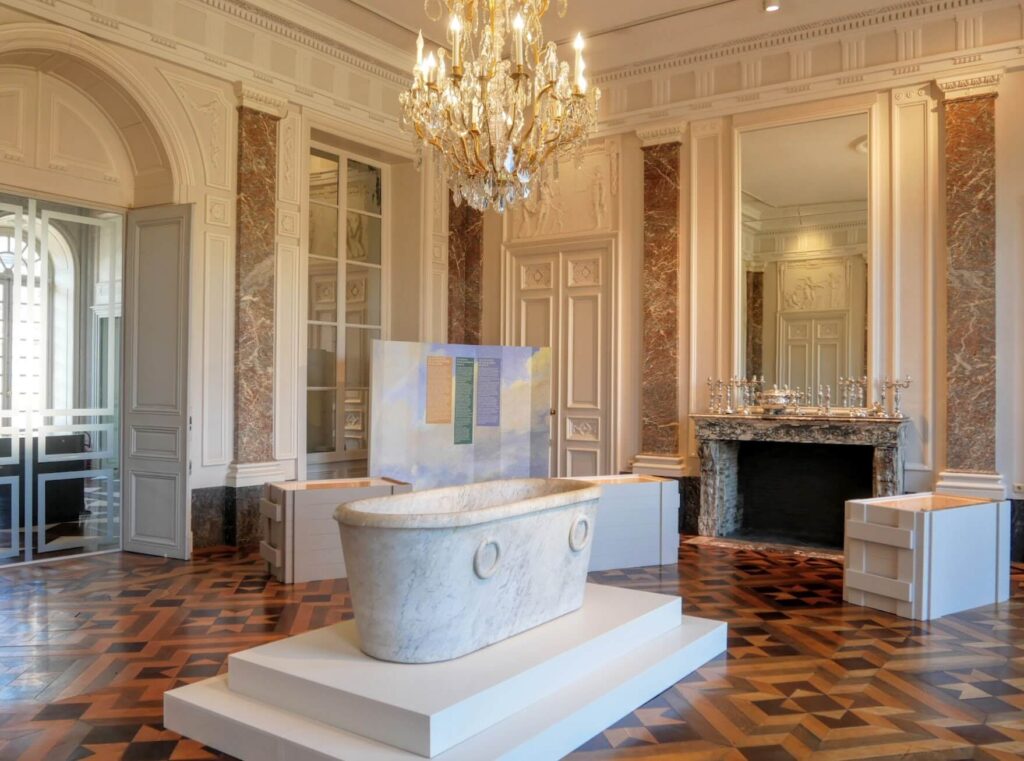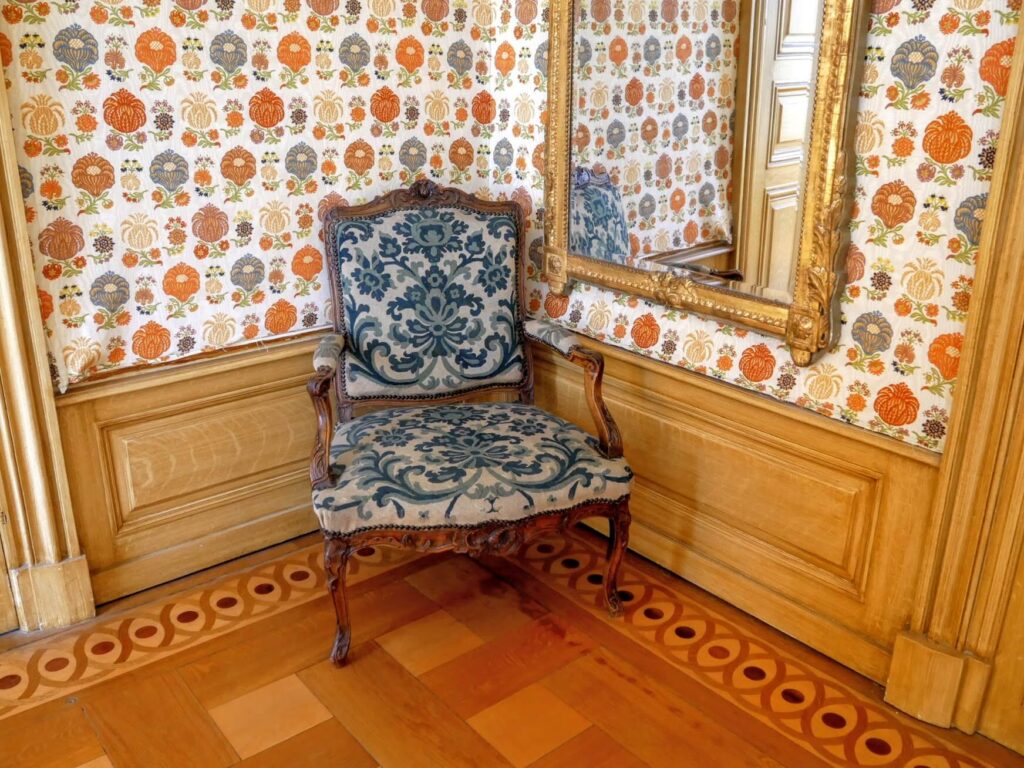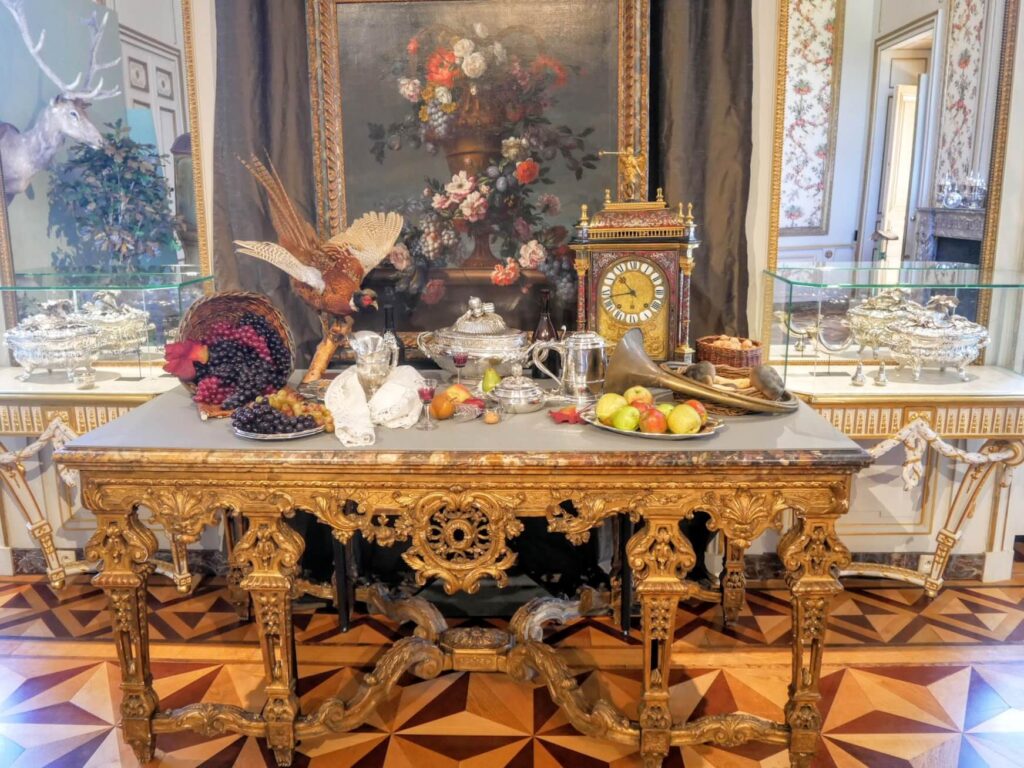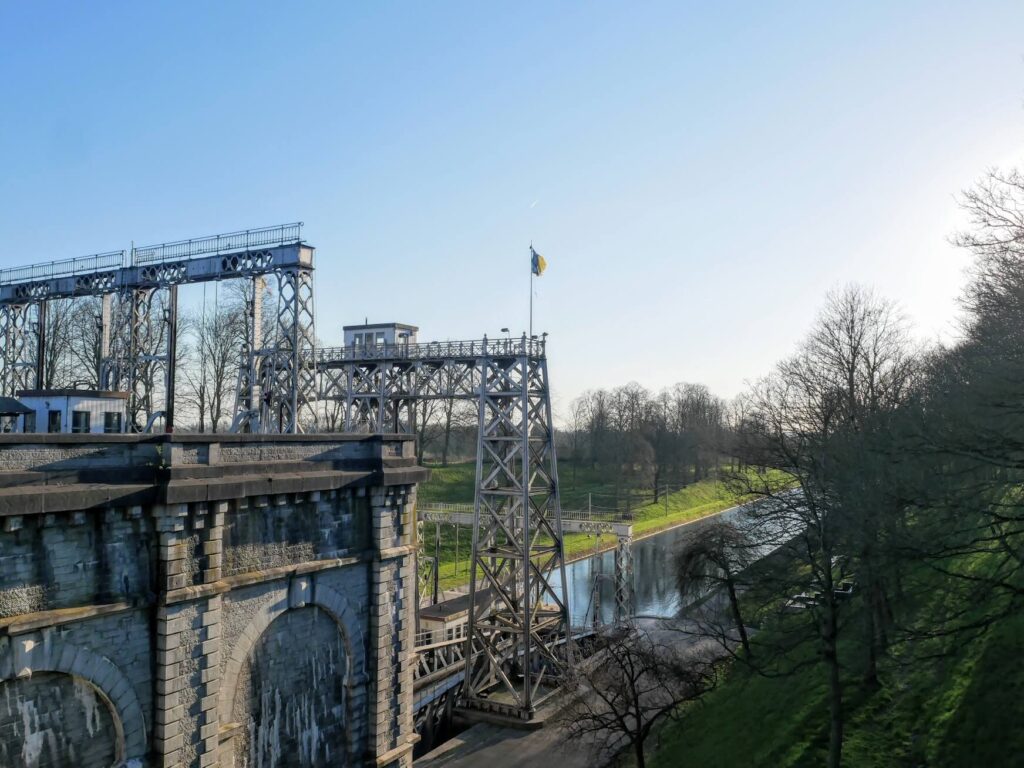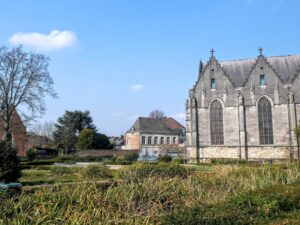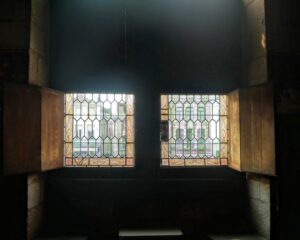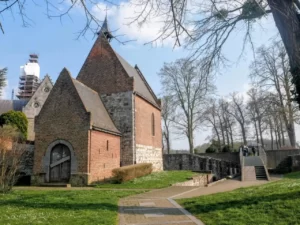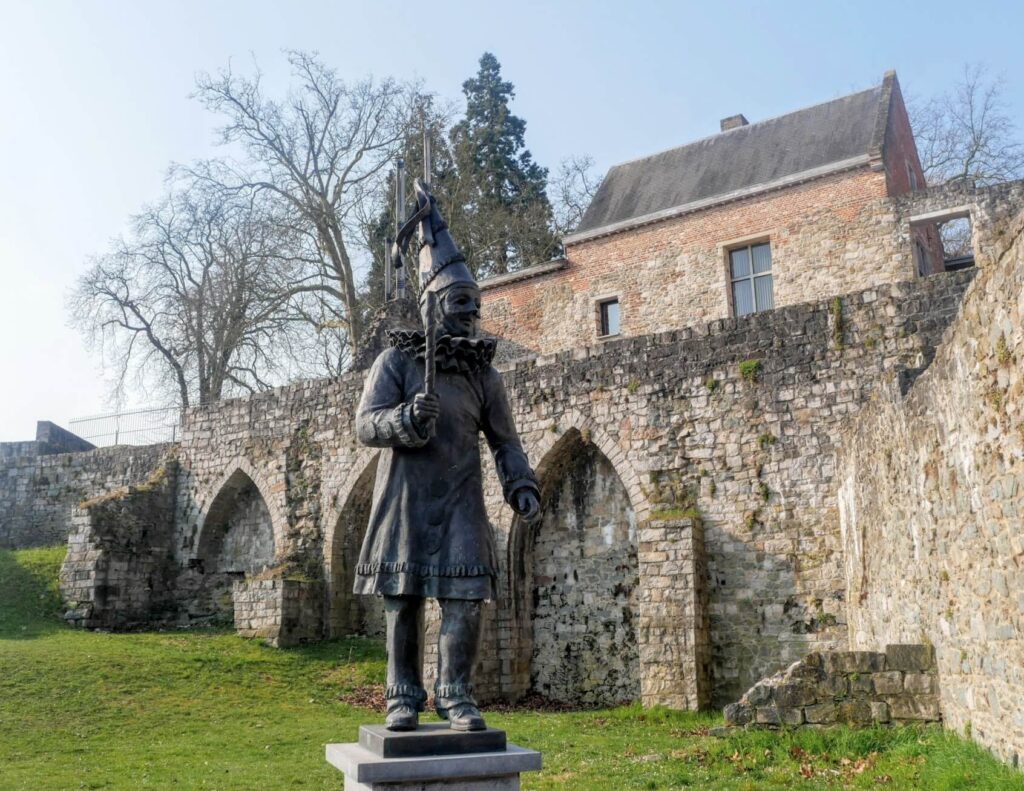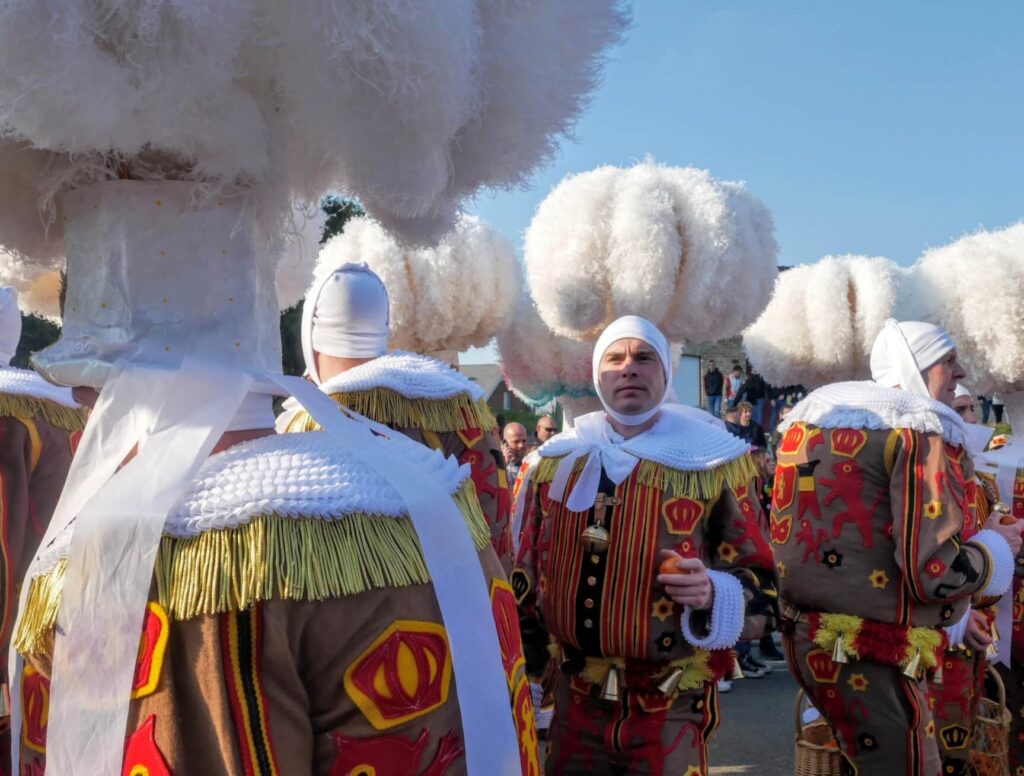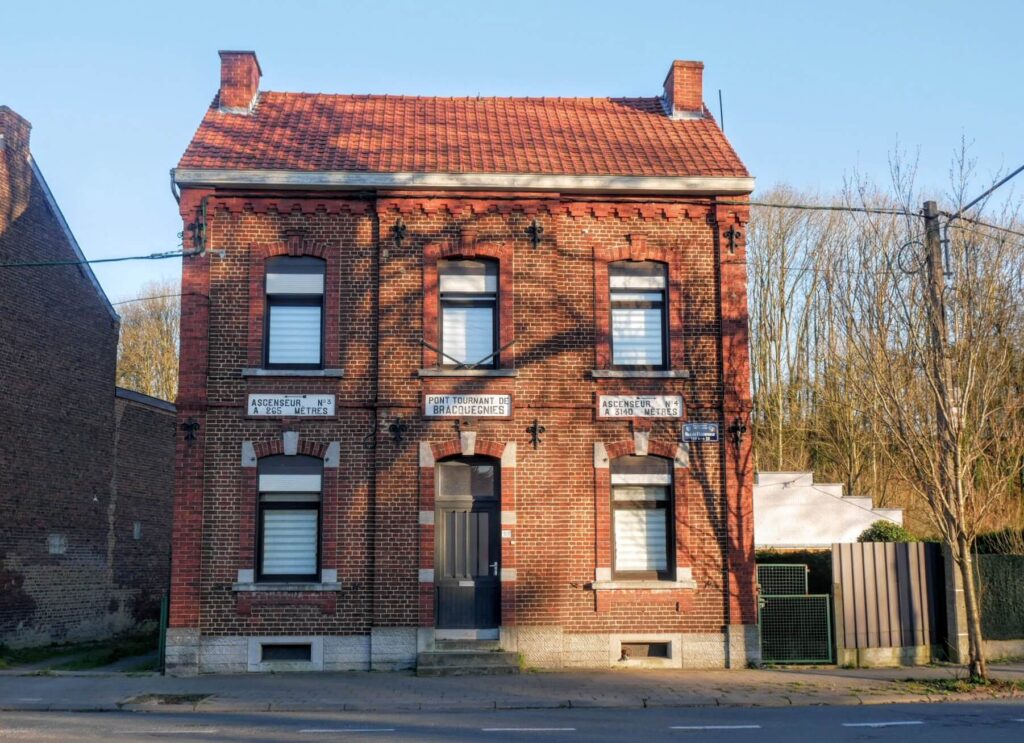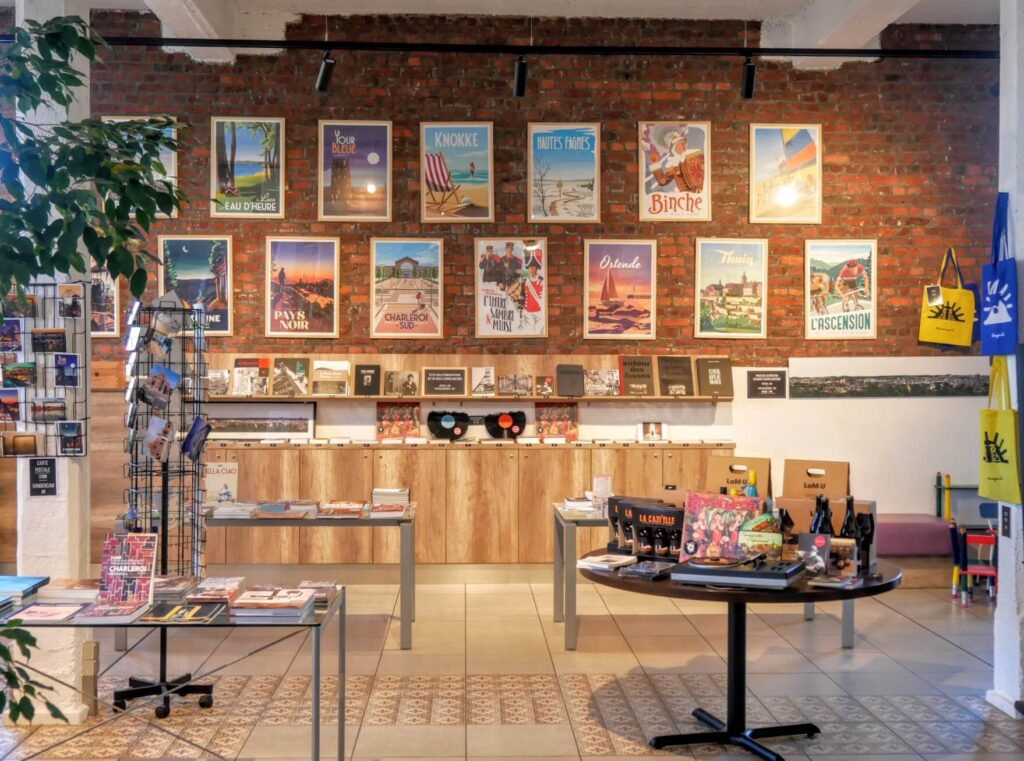Hainaut Province is located in the southern part of Belgium, in its French-speaking region of Wallonia. It’s home to some of the most famous Belgian comic books, fantastic street art, lovely architecture, fascinating history and numerous cultural spots. If you’re wondering about what to see at the Hainaut Province of Belgium, keep reading.
What to see at the Hainaut Province of Belgium
I visited Hainaut Province in March 2022 on a press trip organised by the tourism office of that region.
I’ve spent three days at the Hainaut Province and mainly focused on its cultural sites. However, that region is also well known for its beautiful nature. So, cycling around it, hiking or spending some time in nature could also be a great thing to do there.
Hainaut Province is home to some beautiful towns like Mons or Tournai. However, since I visited both of them before, I skipped them this time. It was also where Vincent van Gogh lived for some time and where he probably decided to become a painter. Besides that, the region is filled with some fascinating museums and UNESCO sites absolutely worth visiting.
⤷ Read more: Van Gogh in Belgium
What to do at the Hainaut Province
There are many different places to visit at the Hainaut Province, it’s best to make a little round trip around it and visit more locations during your trip to that region. That’s precisely what I did.
And although its nature and cultural sites are absolutely amazing, something I liked even more, were the people of the Hainaut Province. One of the benefits of travelling around the areas that are not that crowded with tourists is that you’ll actually get a chance to meet some local people. And that’s one of my favourite parts of travelling.
Having a beer with some of my guides or just chitchatting with a local girl I met at the restaurant made me experience this region in a completely different way. Learning about everyday life, local slang, or some of the popular food at the Hainaut Province was something I really enjoyed.
Charleroi
Charleroi is probably the most well-known town in the Hainaut Province. Although it has a particular reputation because of its industrial past, the city is getting a more urban vibe today. You’ll stumble on so much street art while exploring that Belgian town.
Charleroi is also hometown of one of the most famous comic books characters, Lucky Luke. His statue is located in one of the city parks, close to the metro station completely dedicated to that character.
As in the rest of Belgium, you’ll find numerous Art Nouveau and Art Deco buildings around the town. One of my favourite sites was the old passage at the Rive Gauche shopping mall. Exiting noisy and a bit hectic modern part of a shopping mall, it looks like you stepped into some past time. The historical passage is also home to some more traditional shops. The one selling some old comic books editions was my favourite.
⤷ TIP: I explored Charleroi with the Totemus app. It’s a free city app designed as a game, with which you can take a city tour, learn more about some of its sites and have fun while exploring Charleroi.
Museum of Photography
Situated at the outskirts of Charleroi, Museum of Photography is one of the must-see places in the Hainaut Province. Located at the old convent, it has a great collection of old cameras and photography related items. I had a tour there, which I strongly recommend because I learned so much about the history of photography and how it developed as an industry first, and an art form later on.
The museum also has a wonderful collection of photos, made from the 19th century to the present day. Seeing how photography developed from merely being a document of time to the art form was something really fascinating to observe at this museum.
⤷ Read more: Things to do in Tournai
Bois du Cazier
I started my second day of travelling around the Hainaut Province by exploring one of the most interesting historical locations in the region. Bois du Cazier is a site of the former coal mine. It’s fascinating to see old industrial buildings and metal constructions standing in a huge contrast with the lovely nature. The site is home to The Glass Museum and the Industrial Museum, and both have some pretty interesting exhibitions.
Bois du Cazier is also a location of one of the worst coal mining tragedies that happened on August 8th 1956. During it, 262 workers died, many of which were foreigners, mostly Italians. Today, a large part of the site is dedicated to their memory.
⤷ TIP: Take an audio guide while exploring the site. It’s very well done, and you’ll learn a lot about its history and some of its buildings.
⤷ TIP no. 2: Have lunch at the Emocion Restaurant at a museum. You’ll have excellent Italian and Spanish food while enjoying the view of that historical site and the surrounding nature.
Chateau of Seneffe
This region is home to many lovely castles. Visiting some of them should definitely be among the things to see in the Hainaut Province. I visited one of them, Chateau of Seneffe. It’s a beautiful 18th-century residence that consists of a chateau, lovely gardens and some smaller buildings, like a theatre or greenhouse.
The chateau wasn’t built by the noble person but by the merchant Julien Depestre. However, with building this magnificent edifice, he wanted to get closer to being perceived as a member of the noble class.
I had a fantastic tour guide there who made the visit to this place so much more enjoyable. The interior shows the life and different types of rooms at these kinds of buildings. Its furniture, silverware, and special collections like books tell you a lot about life back in the time. To me, most fascinating were study rooms, witnessing the importance of knowledge and how crucial it was in the past.
⤷ Read more: Best museums in Tournai
Canal du Centre boat lifts at La Louviere
If you wonder what to see at the Hainaut Province, definitely put the boat lifts at La Louviere on your list. They consist of four historical lifts on Canal du Centre. During the warmer period of the year, you can explore them on one of the tour boats and experience the lifts first-hand from the water.
The oldest lift was opened in 1888, and three others in 1917. They are unique because they still don’t use any electricity for operating them. Each elevator consists of two portable water tanks. They are hydraulically linked, so when one gets down, the other goes up. In that way, they only use the power of water to move the boats up or down. That was recognised by UNESCO, which put them on their list of World Heritage Sites.
⤷ TIP: You can watch the video interview I did with Nicholas Matloka, who works for them and explains more about them, on a link here.
Binche
This region is home to many cute, charming towns. Still, if you wonder what to see at the Hainaut Province, you should absolutely visit Binche. I fell in love with that lovely place immediately.
The town was founded back in the Middle Ages. It’s also when most of its defensive walls were built. You can still see many of them surrounding the city, giving it a strong historical feel. Besides them, some of the must-see places in Binche are its Town Hall with the Belfry listed by UNESCO and Saint-Ursmer Collegiate Church. Wandering around its narrow cobbled streets is also a must and a lovely way to explore that picturesque town. Located on the walls next to the church are the archaeological remains of Queen Mary of Hungary’s Palace.
⤷ TIP: Five belfries from the Hainaut Province are listed by UNESCO. They are located in the towns of Mons, Tournai, Binche, Charleroi and Thuin.
International Carnival and Mask Museum in Binche
Binche is also well known as one of the carnival centres, not only in the Hainaut Province but in the whole of Belgium. You’ll find statues of some of the most well-known characters from the carnival around the town.
However, you’ll learn most about carnival tradition at the International Carnival and Mask Museum in Binche. It’s a lovely museum located in a beautiful historical building. They have several exhibitions at which you’ll find out more about the masks around the world and certain traditions linked to the carnival.
However, the most fascinating is the exhibition about the tradition of the local carnival in Binche and the surrounding region. From its origins to the costumes creating and the carnival agenda, it makes the history and spirit of that region come to life.
⤷ Read more: Mons Travel Guide
Hainaut Province Carnival
And it came to life even more that same afternoon! I was very fortunate there was a carnival with a typical procession organised in a village some ten minutes drive away from Binche. Suddenly, I was surrounded by all those masks, costumes, music and smells I experienced in a museum just a few hours ago. Men in the procession were throwing oranges to people that gathered to see them. And the whole place was echoing with the typical carnival music.
Although I left the museum with an impression, the carnival is so important for the Hainaut Province. After experiencing it in reality, I fully understood it’s a part of who they are for people living in that region.
Tips for visiting the Hainaut Province
⤷ French is the official language – As you probably know, there are three official languages in Belgium: French, Dutch (Flemish) and German. Hainaut Province is located in Wallonia, and the language people speak there is French. You may have some difficulties with English, but in general, you should be okay with it. However, learning a few words of French could definitely go a long way.
⤷ Getting around the Hainaut Province – I travelled to the Hainaut Province from Brussels by train. It’s pretty easy to navigate Belgian trains (here is the website where you can find all the info). You can also use public transport in Hainaut Province, but be sure to familiarise yourself with it in advance. I travelled around the region by car, which was also very convenient.
⤷ Try some local sparkling wine – Belgium is famous for its excellent beers, and you’ll find a wide variety of them at the Hainaut Province, as well. However, if you’d like to taste something really local, be sure to try some local sparkling wine. While driving around the region, you can actually see some of the vineyards. I tried the sparkling wine called Ruffus and am recommending it!
Even if you haven’t heard of the Hainaut Province before, chances are you know some of its symbols, such as Lucky Luke, since you were a child. With knowing more about what to see at the Hainaut Province now, perhaps it’s the right time to plan a trip to that beautiful region of Belgium.
I visited the Hainaut Province in Belgium on a press trip organised by their tourism department. Many thanks to everyone at the tourism office, local guides, people from museums and other cultural institutions for organising such a wonderful trip for me. And telling me more about their beautiful region.


